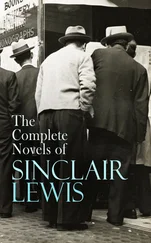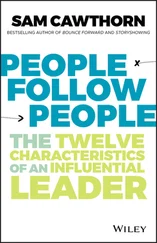Iain Sinclair - Millennium People
Здесь есть возможность читать онлайн «Iain Sinclair - Millennium People» — ознакомительный отрывок электронной книги совершенно бесплатно, а после прочтения отрывка купить полную версию. В некоторых случаях можно слушать аудио, скачать через торрент в формате fb2 и присутствует краткое содержание. Жанр: unrecognised, на английском языке. Описание произведения, (предисловие) а так же отзывы посетителей доступны на портале библиотеки ЛибКат.
- Название:Millennium People
- Автор:
- Жанр:
- Год:неизвестен
- ISBN:нет данных
- Рейтинг книги:3 / 5. Голосов: 1
-
Избранное:Добавить в избранное
- Отзывы:
-
Ваша оценка:
- 60
- 1
- 2
- 3
- 4
- 5
Millennium People: краткое содержание, описание и аннотация
Предлагаем к чтению аннотацию, описание, краткое содержание или предисловие (зависит от того, что написал сам автор книги «Millennium People»). Если вы не нашли необходимую информацию о книге — напишите в комментариях, мы постараемся отыскать её.
Millennium People — читать онлайн ознакомительный отрывок
Ниже представлен текст книги, разбитый по страницам. Система сохранения места последней прочитанной страницы, позволяет с удобством читать онлайн бесплатно книгу «Millennium People», без необходимости каждый раз заново искать на чём Вы остановились. Поставьте закладку, и сможете в любой момент перейти на страницу, на которой закончили чтение.
Интервал:
Закладка:
The siege negotiators sent in by Kensington and Chelsea Council were met first by silence, then by mockery, and finally by petrol bombs. For reasons no one understood, the inhabitants of Chelsea Marina had set about dismantling their middle-class world. They lit bonfires of books and paintings, educational toys and videos. The television news showed families arm in arm, surrounded by overturned cars, their faces proudly lit by the flames.
I passed a fire-gutted BMW, lying wheels uppermost beside the kerb, and stared at its ruptured fuel tank. An airliner cruised over central London, and hundreds of broken windows trembled under the droning engines, as if releasing their last anger. Curiously, the residents who destroyed Chelsea Marina had shown no anger at all. They had quietly discarded their world as if putting out their rubbish for collection.
This uncanny calm and, more worryingly, the residents’ indifference to the huge financial penalties they would pay, had prompted the Home Secretary’s visit. Henry Kendall, a colleague at the Institute with close Home Office contacts, told me that other sites of middle-class unrest were coming to light, in well-to-do suburbs of Guildford, Leeds and Manchester. All over England an entire professional caste was rejecting everything it had worked so hard to secure.
I watched the airliner cross the Fulham skyline, then lost it among the exposed roof-beams of a burnt-out house at the end of Beaufort Avenue. Its owners, a local headmistress and her doctor husband, had left Chelsea Marina with their three children, after holding out to the last minutes before the police riot teams overwhelmed them. They had been in the forefront of the rebellion, determined to expose the blatant injustice that ruled their lives. I imagined them endlessly circling the M25 in their muddy Land Rover, locked in a deep trance.
Where had they gone? Many of the residents had retreated to their country cottages, or were staying with friends who supported the struggle with food parcels and cheerful e-mails. Others had set off on indefinite tours of the Lake District and the Scottish Highlands. Towing their trailers, they were the vanguard of an itinerant middle class, a new tribe of university-trained gypsies who knew their law and would raise hell with local councils.
Kay Churchill, the film studies lecturer at South Bank University who became my landlady, was arrested by the police and released on bail. Still proclaiming the revolution, she held forth on an afternoon cable channel. Her cramped but comfortable home, with its shabby sofas and film stills, had been drowned by the powerful hoses of the Chelsea Fire Service.
I missed Kay and her shaky crown of ash-grey hair, her erratic opinions and ever-flowing wine, but her abandoned house was my reason for arriving an hour before the Home Secretary. I hoped that my laptop was still on the coffee table in Kay’s living room, where we had laid out our maps and planned the arson attacks on the National Film Theatre and the Albert Hall. During the final moments of the revolt, as the police helicopters hovered overhead, Kay was so determined to convert the handsome fire chief to her cause that his men had ample time to shatter her windows with their water jets. A neighbour had pulled Kay from the house, but the laptop was still there for the police forensic teams to find.
I reached the end of Beaufort Avenue, at the silent centre of Chelsea Marina. A seven-storey block of flats stood beside Cadogan Circle, banners hanging limply from the balconies and offering their slogans to the unlistening air. I crossed the road to Grosvenor Place, Kay’s raffish cul-de-sac and a reminder of another, older Chelsea. The short road had been home to a convicted antiques dealer, two lesbian marriages and an alcoholic Concorde pilot, and was a haven of bad company and good cheer.
I walked towards Kay’s dishevelled house, listening to my footsteps click behind me, echoes of guilt trying to flee the scene but managing only to approach itself. Distracted by the sight of so many empty houses, I tripped on the kerb and leaned against a builder’s skip heaped with household possessions. The revolutionaries, as ever considerate of their neighbours, had ordered a dozen of these huge containers in the week before the uprising.
A burnt-out Volvo sat beside the road, but the proprieties still ruled, and it had been pushed into a parking bay. The rebels had tidied up after their revolution. Almost all the overturned cars had been righted, keys left in their ignitions, ready for the repossession men.
The skip was filled with books, tennis rackets, children’s toys and a pair of charred skis. Beside a school blazer with scorched piping was an almost new worsted suit, the daytime uniform of a middle-ranking executive, lying among the debris like the discarded fatigues of a soldier who had thrown down his rifle and taken to the hills. The suit seemed strangely vulnerable, the abandoned flag of an entire civilization, and I hoped that one of the Home Secretary’s aides would point it out to him. I tried to think of an answer if I was asked to comment. As a member of the Adler Institute, which specialized in industrial relations and the psychology of the workplace, I was nominally an expert on the emotional life of the office and the mental problems of middle managers. But the suit was difficult to explain away.
Kay Churchill would have known what to reply. As I stepped through the pools of water outside her house I could hear her voice inside my head: bullying, pleading, sensible and utterly mad. The middle class was the new proletariat, the victims of a centuries-old conspiracy, at last throwing off the chains of duty and civic responsibility.
For once, the absurd answer was probably the right one.
The firemen had drenched the house, making sure that Kay would never set it alight. Water still dripped from the eaves, and a faint mist rose from the brickwork. The open-plan living room was a marine grotto, moisture seeping through the cracked ceiling, turning the walls into damp tapestries. I stood between the Ozu and Bresson posters, almost expecting Kay to emerge from the kitchen with two glasses and a bottle of some admirer’s wine, insisting that the battle had been won.
Kay had left, but her cheerful and rackety world was still in place – the Post-it notes on the mirror above the fireplace, the lecture invitations from anarchist groups, and the cairn of white pebbles on the mantelpiece. Each stone, she told me, was a memento of a summer love affair on a Greek beach. Beads of moisture covered the framed photograph of her daughter, now a teenager in Australia, taken on a last holiday before custody was awarded to her husband. Kay had moved on, claiming that memory was a baited trap, last night’s dregs in a lipstick-smeared glass, but sometimes I caught her wiping her tears from the photograph and pressing the frame to her breast.
The sofa where Kay and I had dozed together was a sodden hulk. But my laptop lay among the film scripts and magazines. The hard drive contained more than enough evidence to convict me as Richard Gould’s co-conspirator. There were lists of video stores to be torched, travel agencies to be attacked, galleries and museums to be sabotaged, and the teams of residents assigned to each action. Trying to impress Kay, I had appended notes on the damage done, injuries to team members and likely insurance claims. Tapping out these unnecessary details, Kay’s arm warmly around my shoulders, I sometimes felt that I was unrolling a carpet that ran straight to my prison cell.
Thinking fondly about Kay, I reached out to straighten the portrait of her daughter. A shard of glass slipped from the frame and cut my palm, lightly severing the life-line. As I stared at the bright smear and searched for my handkerchief, I realized that this was the only blood I had shed in Chelsea Marina during the entire rebellion.
Читать дальшеИнтервал:
Закладка:
Похожие книги на «Millennium People»
Представляем Вашему вниманию похожие книги на «Millennium People» списком для выбора. Мы отобрали схожую по названию и смыслу литературу в надежде предоставить читателям больше вариантов отыскать новые, интересные, ещё непрочитанные произведения.
Обсуждение, отзывы о книге «Millennium People» и просто собственные мнения читателей. Оставьте ваши комментарии, напишите, что Вы думаете о произведении, его смысле или главных героях. Укажите что конкретно понравилось, а что нет, и почему Вы так считаете.












